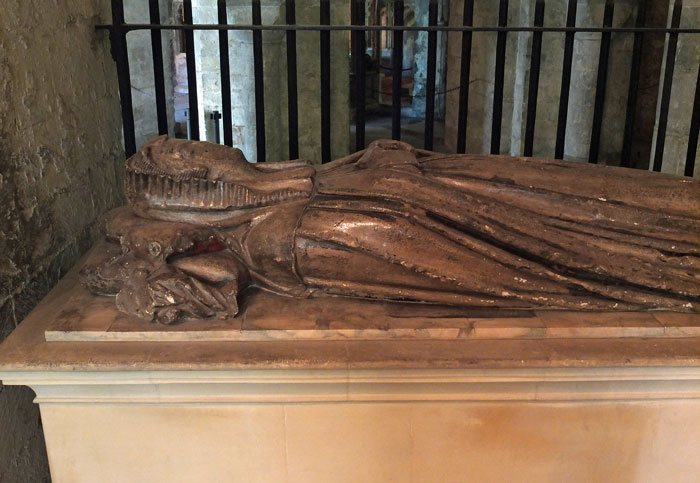Cathedral Benefactor – for more details click here
The tomb is located in the western crypt between the Chapel of Our Lady Undercroft and St Gabriel’s Chapel. It was previously identified as the memorial of the Countess of Athol until, in 1905, St John Hope provided compelling argument that it commemorated Lady Trivet.
In John Dart’s The History and Antiquities of the Cathedral Church of Canterbury an engraving shows a tomb chest “decorated with traceried panels containing shields of arms.” From surviving fragments in 1905 Hope considered the sides and ends of the tomb to have been made of alabaster. The tomb today consists of a recumbent effigy upon a plain tomb chest. The effigy is badly mutilated, but is understood to have once been painted. It is likely the stone is from Purbeck and possibly Purbeck Marble. The effigy lies upon a number of square tiles of alabaster. The tomb chest has been described as made of “freestone” and was designed by Harold Anderson (Surveyor to the Fabric of Canterbury Cathedral from 1946 to 1968) in 1951. The “freestone” is a limestone. In 1951 Anderson was making repairs to the cathedral fabric using a variety of Bath Stone called Box Ground. The finish on the stone chest does not make it possible to verify the use of this stone, but it remains the most likely source of material.

